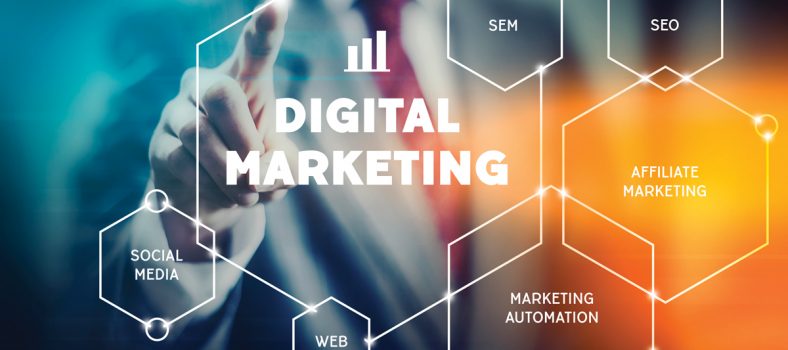 By Hamed Amiri
By Hamed Amiri
The past couple of years have been wild years for the logistics industry as the COVID-19 pandemic broke e-commerce sales records and had retailers rethinking how to best serve their customers.
The shift to more e-commerce also meant that it would be harder to find warehouse space across Canada and the world. According to CBRE Ltd’s Canada Market Outlook 2021 report, for every $1 billion in eCommerce sales, 1.25 million sq. ft. of additional warehouse space was needed. That number is probably even higher for 2022 with ongoing supply chain issues.
Now these are just a couple of the third-party logistics trends that have taken place over the last couple of years, but it doesn’t come without any headaches. The ongoing growth in the industry has also caused chaos on the global supply chain and these issues aren’t going to be resolved anytime soon. During the holiday season in 2021, Western Europe and China’s Henan province, which is a key transport hub, both were impacted by devastating floods. Key transportation routes have been damaged and the flood waters even wrecked warehouses.
With 2022 and 2021 as rough times for the logistics industry, there are some exciting trends to keep an eye on for now and in the future. Here are the 5 third-party logistics trends you need to know about today, and in 2023 and beyond.
Omnichannel Shipping
First on our third-party logistics trends list is omnichannel shipping. Customer shopping experiences and expectations have shifted dramatically, making omnichannel fulfilment is more important than ever before.
The “Amazon effect,” is defined as “the impact created by the online, eCommerce, or digital marketplace on the traditional brick and mortar business model that is the result of the change in shopping patterns, customer expectations, and the industry’s competitive landscape. The Amazon effect is forcing retailers to offer more omnichannel touchpoints to increase customer satisfaction. Retailers need to offer their customers an easy way to shop whether that be in-store or digitally. The supply chain has become more complex than ever before and if you want to stay ahead of your competitors and ensure your customers loyalty, omnichannel shipping must be something your brand utilizes.
Big Data
Big data is one of those third-party logistics trends that when used properly, make your brand efficient and help you save money. GPS and other tracking devices allow logistics companies to monitor the movement of goods in real-time. That information is combined with traffic data, fleet data, and on-road network data to help maximize delivery routes, while also driving up profits.
One big cost that can be brought down with the use of big data is fuel consumption. Gas prices are at an all-time high right now and reducing fuel usage is a must. Saving on fuel also means brands can consciously be aware of their environmental impact and commit to protecting it. Another big data outcome related to route optimization is to decrease mileage. Brands can further save more on fuel and slow down how quickly cars begin to deteriorate during day-to-day operations.
Last-Mile Delivery
Last mile, in supply chain management and transportation planning, is the last leg of a journey comprising the movement of people and goods from a transportation hub to a final destination. With the rapid growth of eCommerce and changing retail conditions, last-mile delivery has taken on more importance for businesses in today’s economy. Having a sound last-mile delivery strategy will keep your customers loyal and attract new ones.
Integrated 3PL services
This is one of those third-party logistics trends that will be extremely important for years to come. You need a 3PL provider that can provide you individual services, but also have the capability to combine them for full effect.
For example, here at Evolution Fulfilment, we offer a handful of different fulfilment services to advance your distribution strategy.
These services include:
- Brand Fulfillment Model: A turnkey alternative to the traditional distribution model that keeps control – and margins – in your hands. Learn more about our unique North American distribution model that we call Brand Fulfillment.
- Amazon FBA Prep Service: Gain access to the massive marketplace that is Amazon without the hassle or headaches of fulfilling orders.
- Cross Border Domesticated Shipping Service: Imagine shipping directly to your US customers in a way that’s both cheaper and faster? If you’re a Canadian brand with $250K+ in annual revenue, you should definitely learn more about our cross border domesticated shipping service.
- B2B Order Fulfillment Service: A business-to-business retail distribution service that adheres to strict guidelines and is customized to suit your logistical needs (pick and pack, cross docking, etc).
- B2C Order Fulfillment Service: A direct-to-consumer (B2C) pick and pack Canadian fulfillment service based in Vancouver, Canada with same day turnaround and a polished consumer experience.
- Dedicated North American Warehousing: An eCommerce warehousing partner that acts as an extension of your company.
- Returns Management: Avoid the distraction and hassle of inevitable product returns.
- Admin Support Services: Focus on your core business by outsourcing accounting and financial processes to experts.
Green Supply Chains
Last on our third-party logistics trends list is green supply chains. Advocacy groups are increasingly pushing for more environmentally-friendly business practices and consumers want to do their part as well.
Different parts of the supply chain have a role to play in creating a more green future. Whether that’s adopting energy management systems, or switching to more electric vehicles, brands can significantly reduce their carbon footprint.
Hamed Amiri is a marketing specialist with Evolution Group of Companies, based in Delta, BC.




